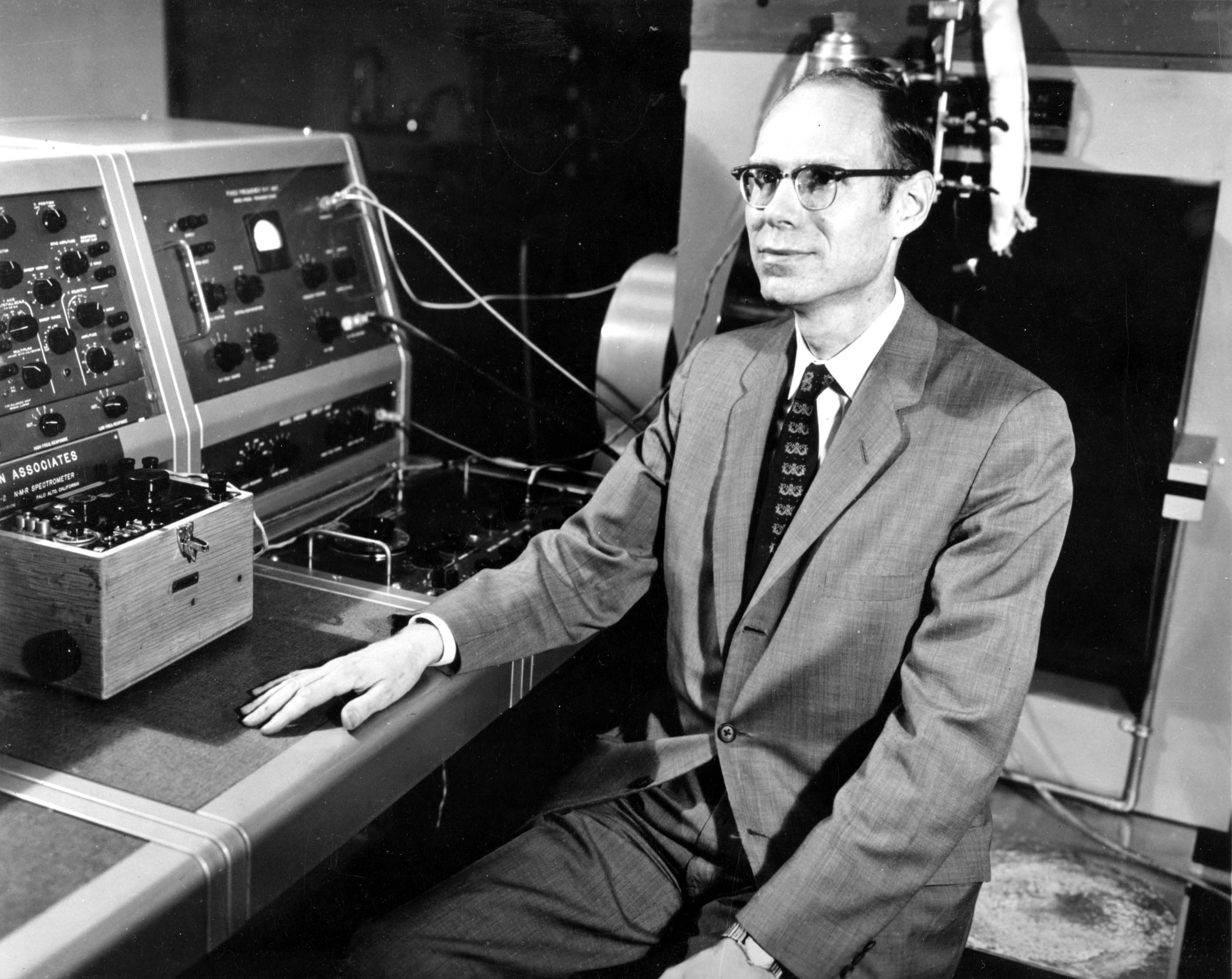- John R. Pierce
Infobox Person
name = John Robinson Pierce
image_size =
caption = John Robinson Pierce
birth_name =
birth_date =March 27 ,1910
birth_place =Iowa ,
death_date =April 2 ,2002
death_place =Sunnyvale, California
death_cause =
resting_place =
resting_place_coordinates =
residence =
nationality = American
other_names =
known_for =
education =
employer =
occupation =
home_town =
title =
salary =
networth =
height =
weight =
term =
predecessor =
successor =
party =
boards =
religion =
spouse =
partner =
children =
parents =
relatives =
website =
footnotes = John Robinson Pierce (March 27 ,1910 –April 2 ,2002 ), was an Americanengineer andauthor . He worked extensively in the fields of radio communication, computer music, and science fiction. Born inIowa , he earned his Ph.D. fromCaltech , and died inSunnyvale, California .He wrote on
electronics andinformation theory , and developed jointly the concept ofPulse code modulation (PCM) with hisBell Labs colleagues Barney Oliver andClaude Shannon . He supervised the Bell Labs team which built the first transistor, and at the request of one of them,Walter Brattain , coined the term "transistor ".Pierce's early work at
Bell Labs was on vacuum tubes of all sorts. DuringWorld War II he discovered the work ofRudolf Kompfner in a British radar lab, where he had invented the traveling-wave tube; [Kompfner, Rudolf, "The Invention of the Traveling-Wave Tube", San Francisco Press, 1964.] Pierce worked out the math for this broadband amplifier device, and wrote a book about it, after hiring Kompfner for Bell Labs. [J. R. Pierce, "Traveling-Wave Tubes", New York: van Nostrand Co., 1950] He later recounted that "Rudy Kompfner invented the traveling-wave tube, but I discovered it." According to Kompfner's book, the statement "Rudi invented the traveling-wave tube, and John discovered it" was due to Dr. Eugene G. Fubini, quoted in "The New Yorker" "Profile" on Pierce, September 21, 1963.Pierce is widely credited for saying "Nature abhors a vacuum tube", but Pierce attributed that quip to Myron Glass [http://www.smecc.org/john_r__pierce____electron_tubes.htm] . Others [Frederick Seitz, Norman G Einspruch, "Electronic Genie: The Tangled History of Silicon," Univ. of Illinois, 1998] say that quip was "commonly heard at the Bell Laboratories prior to the invention of the transistor."
Other famous Pierce quips are "Artificial intelligence is real stupidity", "I thought of it the first time I saw it", and "After growing wildly for years, the field of computing appears to be reaching its infancy."
He did significant research into
satellites , including an important leadership role (as vice President of Bell Laboratories for Research) in the development of the first commercialcommunications satellite ,Telstar 1 . In fact, althoughArthur C. Clarke was the first to propose geostationary communications satellites, Pierce seems to have arrived at the idea independently and may have been the first to discuss "unmanned" communications satellites. See [http://www.smecc.org/john_pierce___echoredo.htm ECHO - America's First Communications Satellite] (reprinted from SMEC Vintage Electrics Volume 2 #1) for some details on his original contributions.After leaving Bell Laboratories, he joined
Caltech as a professor of electrical engineering in 1970. Shortly thereafter, he also took the position of Chief Engineer at theJet Propulsion Laboratory . In 1980 he retired from Caltech and moved to his final position atCCRMA .He was prominent in the research of
computer music , as Visiting Professor of Music, Emeritus atStanford 'sCCRMA (along withJohn Chowning andMax Mathews ).Many of Pierce's technical books were written at a level intended to introduce a semi-technical audience to modern technical topics. Among them are "Electrons, Waves, and Messages"; "An Introduction to Information Theory: Symbols, Signals, and Noise"; "Waves and Ear"; "Man's World of Sound"; and "Quantum Electronics."
Besides his technical books, Pierce wrote
science fiction under thepseudonym J.J. Coupling. He seems to have been a firm believer in the connection between literary imagination and practical innovation. John Pierce also had an early interest ingliding and assisted in the development of the Long Beach Glider Club inLos Angeles, California , one of the earliest glider clubs in the United States.In 1963, Pierce received the
IEEE Edison Medal for "his pioneer work and leadership in satellite communications and for his stimulus and contributions to electron optics, travelling wave tube theory, and the control of noise in electron streams." In 1975, he received theIEEE Medal of Honor for "his pioneering concrete proposals and the realization of satellite communication experiments, and for contributions in theory and design of traveling wave tubes and in electron beam optics essential to this success."Pierce had been a resident of
Berkeley Heights, New Jersey ,Pasadena, California , and later ofPalo Alto, California . [Kamin, Arthur Z. [http://query.nytimes.com/gst/fullpage.html?res=9C05EFD81E3CF930A15753C1A962958260 "State Becomes a Part of Celebrating Marconi's Achievements"] , "The New York Times ",October 23 ,1994 . AccessedJuly 6 ,2008 . "The recipient in 1979 was Dr. John R. Pierce, then of the California Institute of Technology who had been with AT&T Bell Laboratories at Murray Hill and at Holmdel. Dr. Pierce had lived in Berkeley Heights and now lives in Palo Alto, Calif."]References
External links
* [http://www.ieee.org/organizations/history_center/legacies/piercej.html IEEE History Center biography]
* [http://www.ccrnp.ncifcrf.gov/~toms/pierce/creative.thinking.html CREATIVE THINKING by J. R. Pierce, December 1951]
Wikimedia Foundation. 2010.
